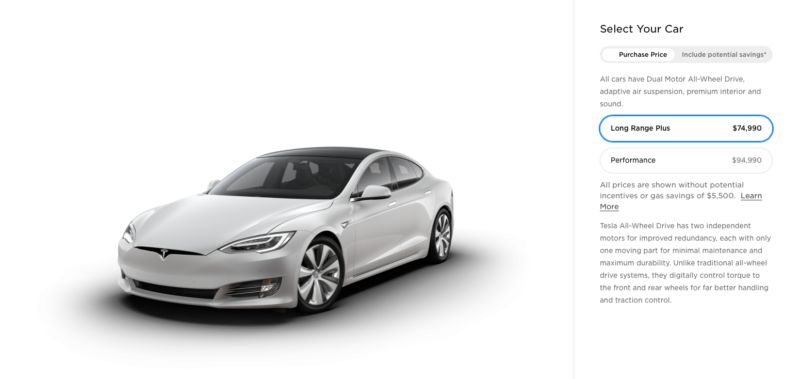

reader comments
231 with 99 posters participating, including story author
On Monday, Tesla announced that its Model S electric sedan can now go 402 miles (647km) between charges. Until now, the longest-legged Model S—with the straightforward moniker Long Range Plus—had to be satisfied with a mere 373 miles (600km) according to the Environmental Protection Agency. Tesla is widely acknowledged to be far ahead of any other automaker when it comes to electric powertrains, but through a series of small tweaks here and there, it has made its oldest electric vehicle go even further on the same amount of kilowatt-hours.
To start with, Tesla has stripped some more mass out of the vehicle. It’s not saying exactly how much, but the improvements come from using the brand’s in-house seats, as well as weight savings in the electric motors and battery pack. There are new 8.5 inch-wide wheels with a lower-rolling-resistance tire that contribute about a two-percent improvement. A similar efficiency boost comes from the front motor’s gearbox.
And now a new Model S Long Range Plus will blend regenerative braking with friction braking to decrease energy losses. Tesla has also added a “brake hold” to the Model S, so you needn’t keep your foot on the left pedal to keep the car stationary. (No joke, this is my absolute favorite convenience feature on any new car, so well done for adding it to the Model S, Tesla.)
If the range bump isn’t enough to tempt new buyers, Tesla has also dropped the price of the Model S again. Now a Long Range Plus will cost you $74,990, $5,000 less than before. (Tesla also recently cut $2,000 from the price of the Model 3 and $5,000 from the Model X.) As we have learned during the company’s quarterly earnings reports, sales of the Model S sedan—first introduced eight years ago—have been falling for several quarters thanks to the expiration of the IRS tax credit and cannibalization from the cheaper, newer Model 3 sedan.


